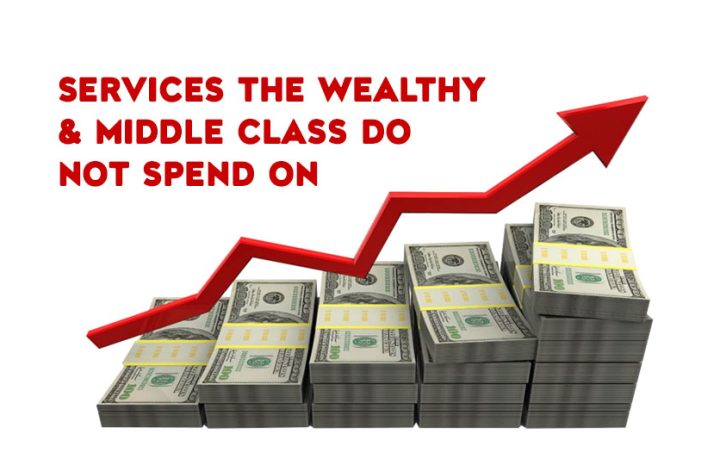The middle class and rich have financial buffers that allow them to avoid some expenses. People who are struggling financially frequently pay for services that others can simply avoid. Many of these costs are fundamental necessities that are more expensive because of a lack of finances, time, or access to alternatives. It’s not only about frills.
People in lower income levels are forced to spend disproportionately more on necessities due to this financial burden, which is referred to as the “poverty tax.” These are a few services that further strain already limited funds.
Check Cashing Services
Cashing a pay cheque is more complicated for people without a standard bank account than simply depositing it into one. The fees charged by check-cashing companies can tally up to a substantial sum over time. While the middle class and rich deposit their checks for free, Americans without bank accounts spend between $200 and $500 a year on check-cashing expenses.
High-Interest Payday Loans
Payday loans look like a lifeline when finances are tight, but emergencies don’t wait for payday. Regretfully, they frequently turn into an anchor. The average payday loan has an annual percentage rate (APR) of about 400%, according to the Consumer Financial Protection Bureau. This temptation is completely avoided by those who have access to low-interest credit lines or emergency funds.
Rent-to-Own Services
Although purchasing a couch or refrigerator fully is preferable, rent-to-own companies provide an expensive alternative for people without credit or funds. According to a National Consumer Law Centre study, rent-to-own products can cost consumers up to three times as much as the original purchase price. If paid for in installments, a $500 washer might easily cost $1,500.
Extended-Stay Motels
Those who cannot afford an apartment deposit now turn to extended-stay motels as a last resort. Although they are promoted as short-term fixes, they have the potential to become long-term financial pitfalls. A month’s rent for a regular apartment may be less expensive than the cost of a motel stay.
Food deserts and pricey groceries
Convenience stores are your only option when it comes to grocery shopping on a tight budget. The dearth of reasonably priced grocery stores in many low-income neighbourhoods forces locals to purchase expensive, processed foods from tiny merchants. Because they are unable to purchase in bulk or locate cheaper pricing, low-income households spend more on food than those who have access to supermarkets.
High-Cost Public Transportation
The cost of owning a car is high, but using public transit isn’t always less expensive. Low-income workers would need to take several buses or ride-sharing services in cities with erratic public transportation in order to get to work on time. According to the Institute for Transportation Development Policy, the average household spending for those without personal vehicles is 16%.
Laundry services and launderettes
Washing clothes can be a weekly financial burden for people without access to in-home laundry equipment. Without detergent, a single load at a laundromat can cost anywhere from $3 to $5. Families spend hundreds of dollars annually on something that people with more money do for pennies a load at home.
Higher Utility Deposits and Fees
A middle-class family with decent credit can typically start utilities without making large deposits when they move into a new house. Households with lower incomes frequently deal with a different reality. Before turning anything on, power and water suppliers might want significant advance payments, which would put more burden on an already taxing situation.
Fees for Alternative Banking
Those without bank accounts pay significantly more, yet bank accounts have hidden fees. A popular option for those without bank accounts, prepaid debit cards frequently have monthly maintenance, transaction, and ATM withdrawal fees. Prepaid debit card users often pay $300 in fees annually, which is money that bank account holders do not have to spend, according to a report.
Costs of Childcare
Richer families can choose from family assistance, flexible work schedules, or nannies. When it comes to daycare, low-income parents frequently have to pay more for less dependable services. According to a Child Care Aware survey, creche expenses for toddlers can surpass $10,000 annually in certain areas, frequently requiring parents to make difficult choices between childcare and work trade-offs.




